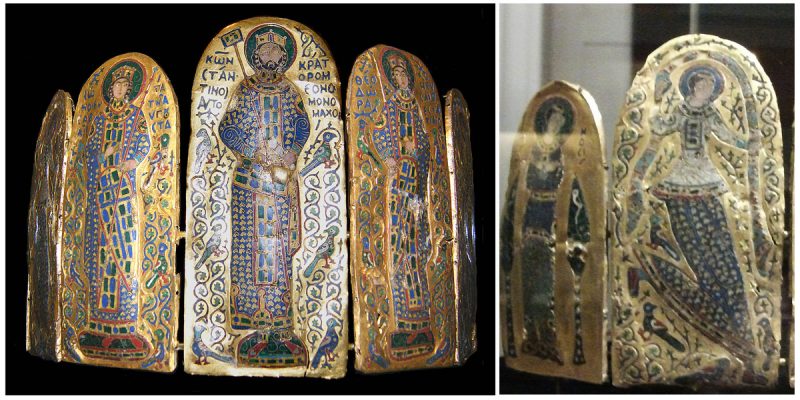One of the only two Byzantine crowns to survive, the first being the Holy Crown of Hungary, is the Monomachus Crown. It is made of seven golden plates which are engraved with pictures of the Byzantine Emperor Constantine IX Monomachus; his wife and his sister, Zoe and Theodora; two female dancers; and two allegorical figures.
The crown was discovered by a farmer in 1860 in Ivanka pri Nitre in Slovakia while he was plowing and it was given to a local landowner who sold it to the Hungarian National Museum in 1861.
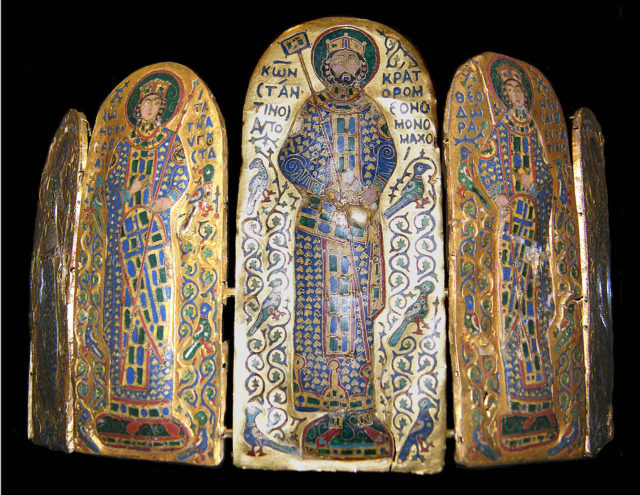
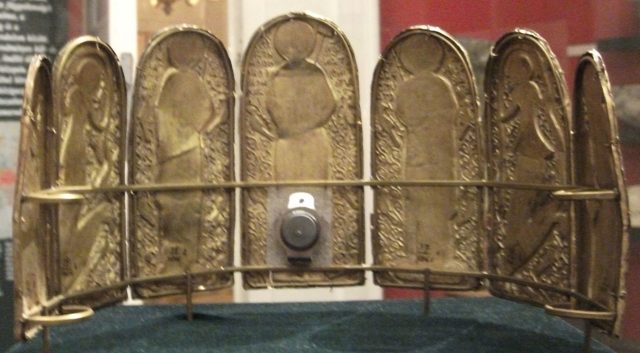
The crown was probably made in Constantinople in 1402 and it is believed that it was a female crown, a gift to Queen Anastasia of Kiev from the Hungarian King Andrew I. According to legend, it was some version of the Holy Crown of Hungary, but there are elements on the crown which are not that old. It is said that King Andrew I was crowned in February 1047 when he traveled from Hungary to Constantinople and brought the crown with him back to Hungary.
Also, it is believed that Solomon buried the crown near Ivanka pri Nitre when he was besieged by Geza I in 1057. He escaped in Bratislava to seek help from his brother-in-law Emperor Henry IV.
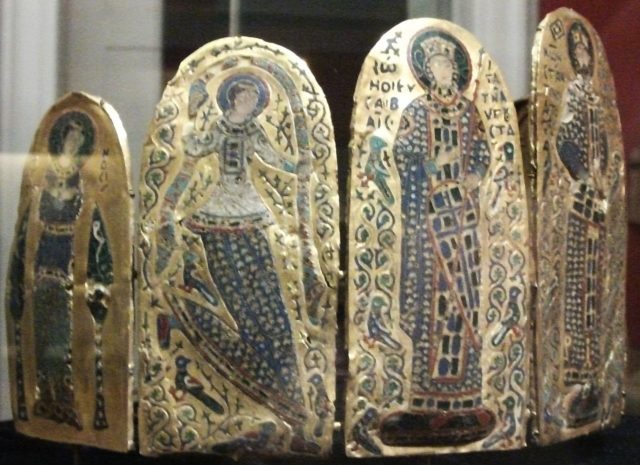
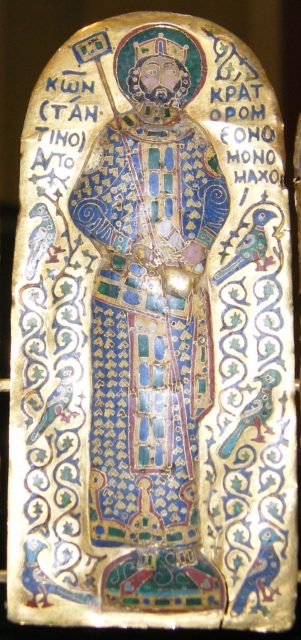
The Emperor Constantine IX Monomachus is engraved on the central plate and there is a Greek inscription on the right and the left side of the Emperor with his name. His wife is engraved on the panel to the right of the central plate and his sister on the left. Next to them, on the both sides, are the plates with the two female dancers.
On the panels either end are the two allegorical figures who represent the Virtues. The inscriptions around them are translated as the Virtues of Sincerity and Humility. His wife and his sister hold scepters which point towards the Emperor, showing his superiority.
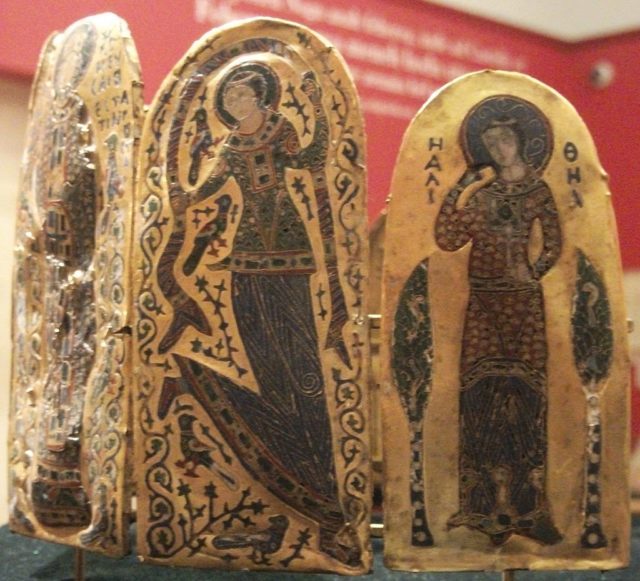
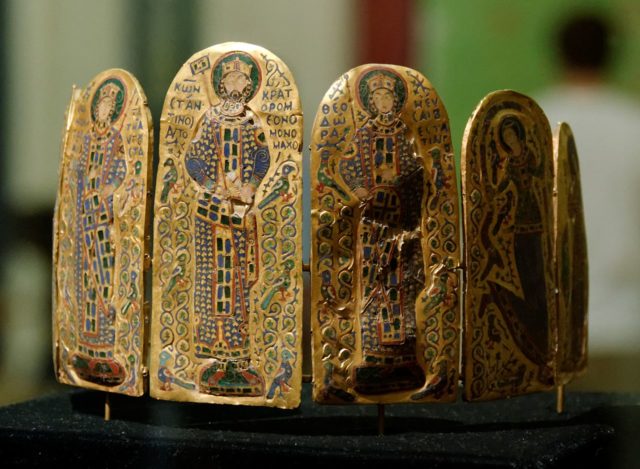
There has been a lot of debate surrounding the function of this piece–some Byzantinists suggest that the crown might be a 19th-century forgery, others suggested that it was a belt or a ceremonial armband which was given to soldiers as an award for bravery.
It is an unusual Byzantine piece with a complex history and is one of the most remarkable surviving Byzantine gold works.
